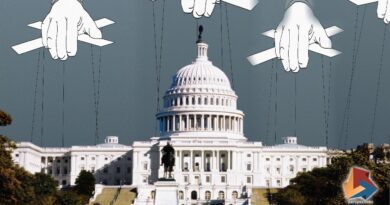Johnson and Trump aren’t the same, but they swim in the same cesspool

In 2007, Boris Johnson took a shot at Hillary Clinton, then a candidate for the Democratic US presidential nomination, in his Telegraph column. He wrote that Clinton’s eyes put him in mind of a “sadistic nurse in a mental hospital” and that she represented “everything I came into politics to oppose,” not least “purse-lipped political correctness”.
He even threw in a reference to “the position of poor Vince Foster’s gun”. Foster was a Clinton-era White House counsel, and his suicide in 1993 has fed wild conspiracy theories – including that the Clintons had him murdered – ever since.
When Clinton ran for president again in 2016, her opponent Donald Trump often spoke of her in similarly inflammatory terms, referring to the Foster case as “very fishy”. Anti-Clinton propaganda swelled online to the point where, a month after the election, a man stormed into a Washington pizzeria to investigate claims that Clinton and other top Democrats were running a paedophile ring out of the basement.
“Pizzagate”, as it was known, and the broader QAnon movement that believes a cabal of Satan-worshipping celebrity paedophiles control the world, has since drifted ever closer to the heart of American public life.
This brings us back to Johnson, who last week lobbed a paedophilia-themed smear at his own political opponent when he falsely suggested in the Commons that Keir Starmer, the Labour leader, had personally failed to prosecute Jimmy Savile during his tenure as director of public prosecutions. Then, on Monday, a mob of protesters harassed Starmer as he walked near the Houses of Parliament, lobbing a range of conspiratorial grievances including that he was a “traitor” and “paedo protector”.
It’s not clear whether the protesters were directly incited by Johnson’s words. But it’s abundantly clear that these sorts of conspiracy theories all swim together in the same cesspool and that it isn’t possible to draw a neat dividing line down the middle of the Atlantic. What happens in America – online and off – increasingly influences what happens here.
The protesters who mobbed Starmer were marching in solidarity with a Canadian anti-mandate movement that has documented QAnon ties. More generally, QAnon, while still small in the UK, has been growing here, too. British adherents, along with other extremists, have previously circulated the Starmer/Savile smear online.
This is the putrid context in which Johnson smeared Starmer. Johnson has always been a keen observer of American political trends, and so it would surprise me if he didn’t know about this one. As much as allies might try to defend it as normal parliamentary “cut and thrust”, Johnson’s remark was a distinctly Trumpian act – not only in its execution, but also in its reception in online fever swamps.
Comparisons between Johnson and Trump are often overblown. Trump’s moves to rile his base have tended to be much more overt, representing a greater departure from conventional political discourse. And he has long stacked his inner circle with creatures of the far-right media fringe – such as Steve Bannon and Michael Flynn. Johnson, who is as pure a product of the London media establishment as you’re likely to meet, has tended to hire spinners with ties to mainstream tabloids. His new communications director, Guto Harri, is a former BBC journalist who wasn’t rightwing enough to hold down a job at GB News.
And attacking opponents with anything that might stick, of course, is a longstanding British media tradition. As a columnist for the Telegraph, Johnson made a habit of smearing his political enemies with a wink and a nod, usually before retreating to a place of plausible deniability. He did just that with his Clinton column, claiming later that it was all a big joke.
He played his Starmer line the same way, initially defending it, before “clarifying” that of course he wasn’t referring to anything Starmer did personally, but rather his overarching role as leader of the prosecution service at the time.
It seems likely that Johnson wasn’t necessarily trying to set a parade of far-right ghouls on Starmer as much as he was desperately throwing out a distraction – any distraction – from the scandals engulfing his government; a classic Johnsonian “dead cat”. That strategy has always been nasty. But our present, US-infused information hellscape makes it dangerous, too.
Government sources have told reporters that it’s unreasonable to see the mob’s actions as Johnson’s fault. But cesspools are hard to separate; when they’re stirred up, everything floats together. And, as we’ve learned from the Trump years, it doesn’t take many extremists to seize on a leader’s words for violence to ensue.
Johnson condemned the mob that harassed Starmer, but he’s made it clear that he won’t be saying sorry for his Savile remark or further distancing himself from it. In 2016, when he was asked again about his old Clinton attacks, he replied that “there is such a rich thesaurus now of things that I have said” that “it would really take me too long to engage in a full, global itinerary of apology to all concerned”. He’s clearly not intending to set off on one now.


